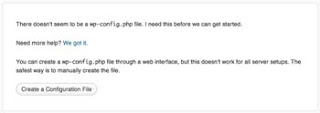Part
– 7: Function Arguments
In previous lesson you saw how we could send
a single value to a function using a function argument. In this lesson we will
send multiple parameters to a function. We will also learn about call by value
and call by reference “call types”.
Multiple
Parameters
In fact you can use more than one argument in
a function. Example 7-1 will show you how you can do this.
Example
7-1: example7-1.c
#include
int min(int a,int b);
main()
{
int m;
m=min(3,6);
printf("Minimum is %d",m);
system("pause");
return 0;
}
int min(int a,int b)
{
if(a<="" font="">
return a;
else
return b;
}
As you see you can add your variables to
arguments list easily. We learned earlier that function prototype is a copy of
function header with the difference that prototype ends with semicolon ‘;’ but
function header does not.
Call
by value
C programming language function calls, use
call by value method. Let’s see an example to understand this subject better.
Example
7-2: example7-2.c
#include
void test(int a);
main()
{
int m;
m=2;
printf("\nM is %d",m);
test(m);
printf("\nM is %d\n",m);
system("pause");
return 0;
}
void test(int a)
{
a=5;
}
In main() function, we have declared a
variable m. We have assigned value ‘2’ to m. We want to see if function call is
able to change value of ‘m’ as we have modified value of incoming parameter
inside test() function. What do you think?
Program
output result is:
M is 2
M is 2
So you see function call has not changed the
value of argument. This s is because function-calling method only sends “value
of variable” m to the function and it does not send variable itself. Actually
it places value of variable m in a memory location called stack and then
function retrieves the value without having access to main variable itself.
This is why we call this method of calling “call by value”.
Call
by reference
There is another method of sending variables
being called “Call by reference”. This second method
enables function to modify value of argument
variables used in function call.
We will first see an example and then we will
describe it.
Example
7-3: example7-3.c
#include
void test(int *ptr);
main()
{
int m;
m=2;
printf("\nM is %d",m);
test(&m);
printf("\nM is %d\n",m);
system("pause");
return 0;
}
void test(int *ptr)
{
printf("\nModifying the value inside
memory address %ld",&m);
*ptr=5;
}
To be able to modify the value of a variable
used as an argument in a function, function needs to know memory address of the
variable (where exactly the variable is situated in memory).
In C programming language ‘&’ operator
gives the address at which the variable is stored. For example if ‘m’ is a
variable of type ‘int’ then ‘&m’ will give us the starting memory address
of our variable. We call this resulting address ‘a pointer’.
ptr=&m;
In above command ptr variable will contain
memory address of variable m. This method is used in some of standard functions
in C. For example scanf function uses this method to be able to receive values
from console keyboard and put it in a variable. In fact it places received
value in memory location of the variable used in function. Now we understand
the reason why we add ‘&’ sign before variable names in scanf variables.
Scanf(“%d”,&a);
Now that we have memory address of variable
we must use an operator that enables us to assign a value or access to value
stored in that address.
As we told, we can find address of variable
‘a’ using ‘&’ operator.
ptr=&a;
Now we can find value stored in variable ‘a’
using ‘*’ operator:
Val=*ptr; /* finding the value ptr points to
*/
We can even modify the value inside the
address:
*ptr=5;
Let’s look at our example again. We have
passed pointer (memory address) to function. Now function is able to modify
value stored inside variable. If you run the program, you will get these
results:
M is 2
Modifying the value inside memory address
2293620
M is 5
So you see this time we have changed value of
an argument variable inside the called function (by modifying the value inside
the memory location of our main variable). A useful example, Bubble Sort In
this section we will write a program which sorts an array of numbers using a
famous bubble sort algorithm. This algorithm uses a “swap” function which swaps
values stored in two memory locations with each other.
Bubble sort compares each two cells of the
array and if they are not in correct order, it swaps them. If
we need the array to be sorted in ascending
order, each cell should be bigger or equal to previous cell
and the first cell should be smaller than any
other cell. If we perform these compares and swaps for “n-1” times on the
entire array, our array will be completely sorted.
Example
7-4 (Bubble sort): example7-4.c
#include
void swap(int *a,int *b);
main()
{
int ar[5],i,j,n;
ar[0]=7;ar[1]=3;ar[2]=9;ar[3]=2;ar[4]=11;
printf("Array before sort:\n\n");
for(i=0;i<5;i++)
printf("ar[%d]=%d\n",i,ar[i]);
n=5; /*numberof items in sort array*/
for(i=0;i<=""
font="">
for(j=0;j<=""
font="">
{
if(ar[j]>ar[j+1])
swap(&ar[j],&ar[j+1]);
}
printf("Array after sort:\n\n");
for(i=0;i<5;i++)
printf("ar[%d]=%d\n",i,ar[i]);
system("pause");
return 0;
}
void swap(int *a,int *b)
{
int temp;
temp=*a;
*a=*b;
*b=temp;
}
The
output is:
Array before sort:
ar[0]=7
ar[1]=3
ar[2]=9
ar[3]=2
ar[4]=11
Array after sort:
ar[0]=2
ar[1]=3
ar[2]=7
ar[3]=9
ar[4]=11
End
Note
We
have learned fundamentals of programming in C in these 7 first lessons but
there are a lot of things we must learn.
